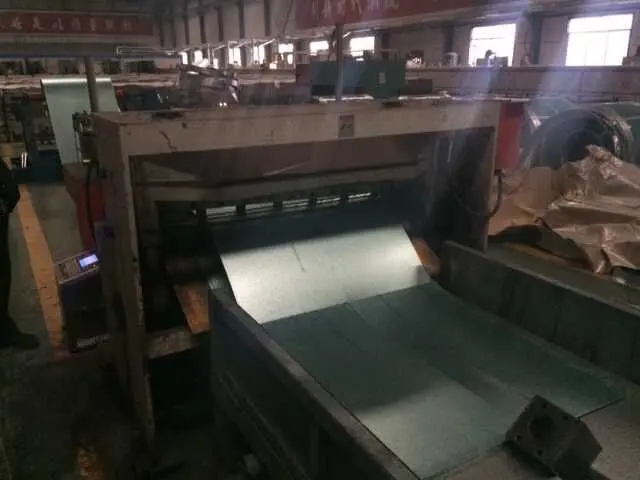
The Sandwich Panel Production Line Innovations and Efficiency
The sandwich panel production line represents a significant advancement in modern manufacturing processes, particularly in the construction and insulation industries. These panels, consisting of two outer layers and a lightweight core, offer exceptional strength, thermal insulation, and energy efficiency. As the demand for prefabricated building materials continues to rise due to rapid urbanization, the sandwich panel production line has become an indispensable component in meeting these needs.
Understanding Sandwich Panels
Sandwich panels are composed of three layers two outer skins made from materials such as steel, aluminum, or fiberglass, and an inner core, which can be made from different substances like polystyrene (EPS), polyurethane (PIR), or mineral wool. The construction of these panels allows for significant advantages, including ease of installation, low thermal conductivity, and lightweight nature, making them ideal for various applications such as industrial warehouses, cold storage facilities, and even residential buildings.
The Production Process
The sandwich panel production line is a sophisticated assembly process designed to produce these panels efficiently and at scale. The production line typically involves several key stages
1. Material Preparation The process begins with the preparation of raw materials. This includes cutting and shaping the outer skins and core material to specified dimensions. Precision at this stage is critical to ensure the proper fit and insulation properties of the finished panels.
2. Lamination The outer layers and the core material are then bonded together using advanced adhesive techniques. This lamination process is crucial for the structural integrity of the panels. Automated conveyor systems move the materials through the lamination station, ensuring consistent quality and reducing the potential for human error.
3. Cutting and Shaping Once the sandwiches are formed, they are cut to the required lengths and shapes. This cutting stage is often equipped with high-precision saws that can handle various panel sizes, minimizing waste and maximizing efficiency.
4. Finishing After cutting, the panels undergo a finishing process that may include surface treatments, painting, and quality checks. This stage ensures that the panels not only meet aesthetic standards but also comply with safety and environmental regulations.

5. Packaging and Shipping The final step involves packaging the finished panels for shipping. They are typically stacked securely and wrapped to protect against damage during transportation. An efficient logistics system is vital to manage the delivery of these panels to construction sites in a timely manner.
Technological Advancements
Recent technological advancements have significantly enhanced the efficiency and effectiveness of sandwich panel production lines. Automation and robotics play a crucial role, allowing for increased speed and precision in the manufacturing process. For example, automated guided vehicles (AGVs) can transport materials throughout the production line, reducing labor costs and increasing safety.
Furthermore, innovations in materials science have led to the development of new core materials that offer even better insulation and fire resistance. As sustainability becomes a priority in construction, the production line is also adapting with eco-friendly materials and processes, reducing the carbon footprint associated with manufacturing.
Market Demand and Future Prospects
The demand for sandwich panels is anticipated to grow in the coming years, driven by the construction of energy-efficient buildings and the need for rapid, modular construction solutions. As countries around the world continue to invest in infrastructure and sustainable building practices, manufacturers of sandwich panels are well-positioned to meet these needs.
In addition, emerging markets in Asia and Africa present new opportunities for growth, as urbanization accelerates and the demand for affordable housing increases. Companies that invest in advanced production technologies and diversify their product offerings will likely gain a competitive advantage in the global market.
Conclusion
The sandwich panel production line is at the forefront of modern manufacturing, combining innovation, efficiency, and sustainability. As the build environment continues to evolve, these production lines will play a key role in providing the materials necessary for the construction of tomorrow's buildings. With ongoing technological advancements and an increasing focus on energy efficiency, the future of sandwich panel production looks promising, poised to meet the needs of a growing global population.